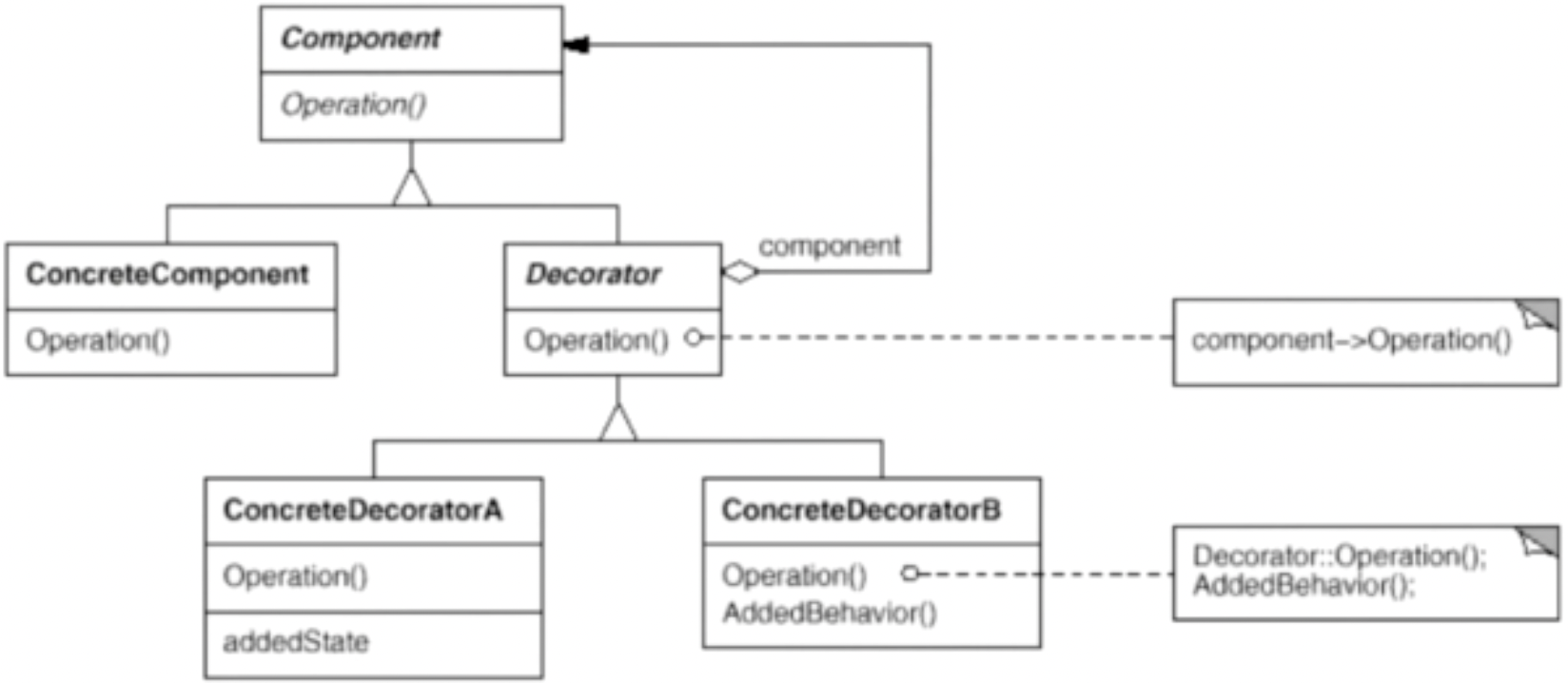装饰器模式
动态地给一个对象增加一些额外的职责,就增加对象功能来说,装饰模式比生成子类实现更为灵活。
示意图

示例代码
ts
interface Component {
operation(): void;
}
class ConcreteComponent implements Component {
operation() {
console.log('具体对象的操作');
}
}
class Decorator implements Component {
private component: Component;
constructor(component: Component) {
this.component = component;
}
operation() {
this.component.operation();
}
}
class ConcreteDecorator extends Decorator {
operation() {
super.operation();
// 具体装饰对象的行为...
}
}
// use case
const component = new ConcreteComponent();
const decoratorA = new ConcreteDecoratorA(component);
decoratorA.operation();interface Component {
operation(): void;
}
class ConcreteComponent implements Component {
operation() {
console.log('具体对象的操作');
}
}
class Decorator implements Component {
private component: Component;
constructor(component: Component) {
this.component = component;
}
operation() {
this.component.operation();
}
}
class ConcreteDecorator extends Decorator {
operation() {
super.operation();
// 具体装饰对象的行为...
}
}
// use case
const component = new ConcreteComponent();
const decoratorA = new ConcreteDecoratorA(component);
decoratorA.operation();优缺点
优点
- 比静态继承更灵活,可以动态地扩展对象的功能。
- 具体构件类与具体装饰类可以独立变化,用户可以根据需要增加新的具体构件类和具体装饰类,在使用时再对其进行组合,原有代码无须改变。
缺点
- 多层装饰会比较复杂。
- 难以排除多个装饰器带来的副作用。
使用场景
- 扩展对象的功能。
- 按层次给类增加职责,替代继承关系。